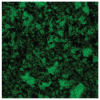[Bacterial biofilms: their importance in animal health and public health]
- PMID: 24688172
- PMCID: PMC3962273
[Bacterial biofilms: their importance in animal health and public health]
Abstract
Bacterial biofilms are structured communities of bacterial cells enclosed in a self-produced polymer matrix that is attached to a surface. Biofilms protect and allow bacteria to survive and thrive in hostile environments. Bacteria within biofilms can withstand host immune responses, and are much less susceptible to antibiotics and disinfectants when compared to their planktonic counterparts. The ability to form biofilms is now considered an attribute of many microorganisms. Diseases associated with biofilms require novel methods for their prevention, diagnosis and treatment; this is largely due to the properties of biofilms. Furthermore, the presence of biofilms on surfaces found at farms, slaughterhouses or food processing plants will have an impact on the efficacy of disinfection protocols. Surprisingly, biofilm formation by bacterial pathogens of veterinary or zoonotic importance has received relatively little attention. The objective of this brief Review article is to bring awareness about the importance of biofilms to animal health stakeholders.(Translated by the authors).
Les biofilms bactériens sont des amas structurés de cellules bactériennes enrobés d’une matrice polymérique et attachés à une surface. Le biofilm protège les bactéries et leur permet de survivre dans des conditions environnementales hostiles. Les bactéries du biofilm peuvent résister à la réponse immunitaire de l’hôte et sont beaucoup plus résistantes aux antibiotiques et aux désinfectants que les cellules bactériennes planctoniques. La capacité de former un biofilm est maintenant reconnue comme une caractéristique propre à plusieurs microorganismes. La présence de biofilms lors d’infections demande donc de nouvelles méthodes de prévention, de diagnostic et de traitement. De même, la présence de biofilms sur des surfaces retrouvées à la ferme, à l’abattoir ou à l’usine de transformation affectera l’efficacité du protocole de désinfection. De façon surprenante, la formation de biofilms chez les bactéries pathogènes des animaux et les bactéries zoonotiques est un sujet relativement peu étudié. Ce bref compte rendu a pour objectif de sensibiliser les intervenants en santé animale à l’importance des biofilms.
Figures
References
-
- Costerton JW, Stewart PS, Greenberg EP. Bacterial biofilms: A common cause of persistent infections. Science. 1999;284:1318–1322. - PubMed
-
- Hall-Stoodley L, Stoodley P. Evolving concepts in biofilm infections. Cell Microbiol. 2009;11:1034–1043. - PubMed
-
- Hall-Stoodley L, Costerton JW, Stoodley P. Bacterial biofilms: From the natural environment to infectious diseases. Nat Rev Microbiol. 2004;2:95–108. - PubMed
-
- Richards JJ, Melander C. Controlling bacterial biofilms. ChemBioChem. 2009;10:2287–2294. - PubMed
-
- Anderson GG, O’Toole GA. Innate and induced resistance mechanisms of bacterial biofilms. Curr Top Microbiol Immunol. 2008;322:85–105. - PubMed
Publication types
MeSH terms
Substances
LinkOut - more resources
Full Text Sources
Other Literature Sources
Medical


